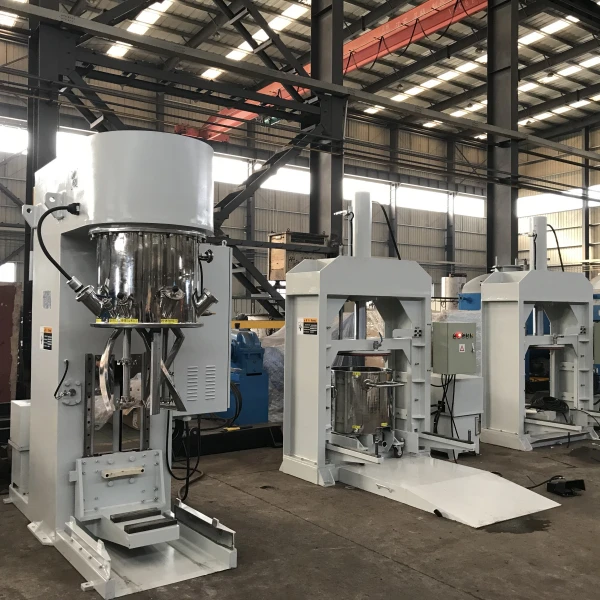- This topic is empty.
-
AuthorPosts
-
2025-09-26 at 5:01 pm #10792
In modern manufacturing, the internal mixer has become the cornerstone of material processing, particularly in the rubber and plastics industries. Its unique ability to blend polymers, fillers, and additives under controlled pressure, temperature, and shear ensures that raw materials transform into highly functional compounds. While the internal mixer has applications across many sectors, its most critical roles lie in rubber processing and plastics processing. These two industries rely on uncompromised quality, precision, and efficiency, and the internal mixer delivers exactly that.

The Role of Internal Mixers in Rubber Processing
Homogenization of Rubber Compounds
Rubber processing requires combining natural or synthetic polymers with fillers such as carbon black or silica. The internal mixer ensures that these fillers disperse uniformly within the polymer matrix. This uniform dispersion is critical for mechanical properties like tensile strength, elasticity, and abrasion resistance.
For instance, in the tire industry, the balance between grip, durability, and rolling resistance depends on how well the compound is mixed. A poor dispersion leads to uneven wear, reduced safety, and diminished performance. By delivering consistent homogenization, the internal mixer enables manufacturers to meet stringent automotive standards.
Integration of Additives
Rubber formulations often contain multiple additives: antioxidants, curing agents, accelerators, and processing oils. Each additive must be carefully dispersed to function effectively. The internal mixer provides the controlled shear and temperature environment required to integrate these sensitive chemicals without degradation.
For example, curing agents must remain stable during mixing, yet be evenly distributed to guarantee uniform vulcanization during the final curing stage. The internal mixer makes this possible by precisely balancing pressure and heat, ensuring additives are active when needed but not prematurely triggered.
Improving Process Efficiency
The internal mixer enables large-scale production by processing big batches in a relatively short time. Adjustable ram pressure, rotor speed, and chamber temperature allow operators to fine-tune the mixing cycle for different rubber grades. This flexibility ensures that manufacturers can quickly adapt to diverse applications—whether for tires, conveyor belts, or sealing gaskets—without sacrificing quality.
Final Product Quality
Ultimately, the properties of rubber products are only as good as the compounds that form them. A well-mixed rubber batch guarantees:
-
Consistent tensile strength and elasticity.
-
Resistance to fatigue and cracking.
-
Superior performance under thermal and mechanical stress.
This is why the internal mixer is indispensable in the rubber industry—it directly defines product performance and reliability.
The Role of Internal Mixers in Plastics Processing
Uniform Dispersion of Additives
Unlike rubber, plastics often require a wider range of functional additives, including flame retardants, stabilizers, pigments, and reinforcing fillers. The internal mixer ensures that these materials disperse evenly within the plastic resin, preventing defects such as streaks, uneven color, or weak spots.
For instance, in packaging applications, a lack of proper dispersion could lead to brittle films or non-uniform thickness. In construction plastics, poor mixing may reduce impact resistance or weatherability. By controlling shear and temperature, the internal mixer delivers stable, defect-free plastic compounds suitable for high-performance applications.
Controlling Thermal Sensitivity
Plastics are highly sensitive to heat, and improper mixing can lead to degradation, discoloration, or molecular breakdown. The internal mixer overcomes this challenge with advanced cooling and heating systems. By maintaining a precise thermal profile, it prevents premature softening or decomposition of polymers while still generating the shear necessary for effective blending.
This capability is especially important in engineering plastics and thermoplastic elastomers, which require strict control to retain their high-performance characteristics.
Enhancing Mechanical Properties
The performance of plastic components often depends on the integration of reinforcing fillers like glass fibers or mineral powders. Without proper dispersion, these fillers cluster, creating stress concentration points that weaken the final product. The internal mixer ensures fillers are evenly distributed, resulting in enhanced tensile strength, impact resistance, and dimensional stability.
Applications range from automotive dashboards and bumpers to electrical casings and consumer goods. Each of these products demands reliability that can only be achieved through consistent mixing quality.
Process Efficiency and Versatility
In plastics manufacturing, speed and adaptability are critical. The internal mixer supports both by handling diverse material formulations and delivering fast, repeatable batch cycles. This efficiency reduces production costs while ensuring high throughput. Moreover, manufacturers can easily switch between different formulations, making the internal mixer an asset in industries with wide product portfolios.
The internal mixer plays an essential role in transforming raw polymers into high-performance materials. In rubber processing, it guarantees uniform dispersion of fillers and additives, leading to strong, durable, and reliable products. In plastics processing, it ensures thermal stability, additive integration, and mechanical strength, creating compounds fit for diverse applications. By focusing on these two industries, it becomes clear that the internal mixer is not just a piece of equipment but the backbone of modern polymer processing. Its ability to deliver consistency, efficiency, and superior product quality makes it indispensable to manufacturers worldwide.
https://www.globalkneader.com/mixer
http://www.globalkneader.com
Nantong Kneading Mixing Machine Co., Ltd -
-
AuthorPosts
- You must be logged in to reply to this topic.